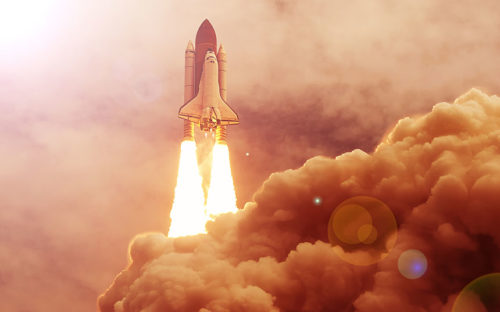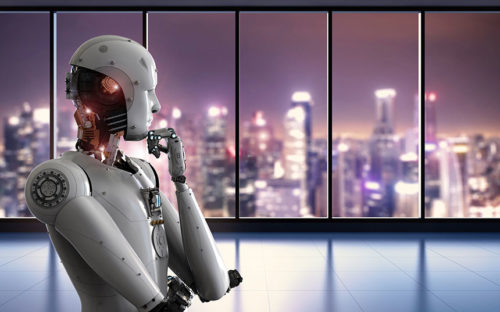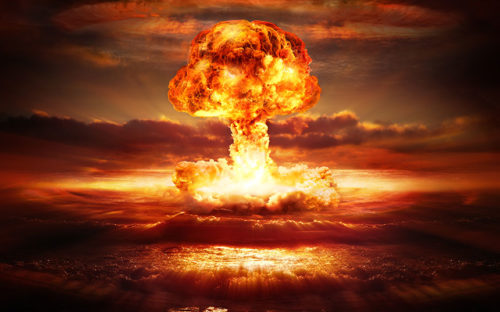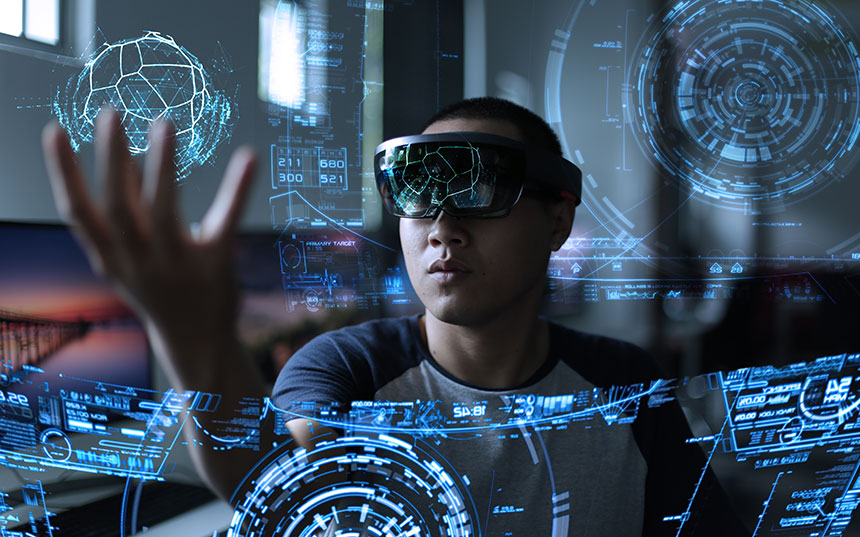Science fiction remains one of the most durable of genres. It takes deeper questions like “What’s out there?” and “Would this work?” and turns them into stories of action or philosophy that reflect our own concerns about the world around us. With a lengthy history that dates back to Lucian’s A True Story from the Second Century of the Common Era, science fiction has had plenty of room to prognosticate on ideas and inventions. Here are a few that made the leap from imagination to reality.
1. A Major Pandemic
Most recently, a mini-sensation grew around the rediscovery of Dean Koontz’s 1981 novel, The Eyes of Darkness and its inclusion of a virus called “Wuhan-400,” as if the novel had predicted the rise of COVID-19 and its seeming point of origin in Wuhan, China; ironically, the virus was originally called “Gorki-400” in the first printing and only changed to “Wuhan-400” in later printings around 2008 or so. As close as that may seem, Koontz wasn’t really forecasting the events of today. He also was far from the first writer to posit the potential effects of a viral threat. Obviously, The Eyes of Darkness came a few years after Stephen King’s 1978 classic, The Stand, which includes a “superflu” that is fatal to over 99 percent of the world’s population. In his nonfiction book, Danse Macabre, King notes that The Stand was itself partially inspired by Earth Abides, George R. Stewart’s 1949 novel in which much of the world is killed by a measles-like disease. 2007’s The Pesthouse by Jim Crace uses a plague as a starting point for an allegory about a crumbling America.
If you want the source of plague-fiction, then you have to go back to the Grande Dame of science fiction herself, Mary Shelley. The writer of Frankenstein wrote The Last Man in 1826, kicking off the “post-apocalyptic pandemic thriller.” While none of these scenarios are precise (King is more concerned with moral choices, and Stewart deals in more ecology), one other book comes a bit closer to today. Michael Crichton’s The Andromeda Strain from 1969 basically started the techo-thriller genre and uses Crichton’s medical background and scientist characters to demonstrate some fairly real (and not so real) methods for dealing with the book’s fictional threat.
2. Missions to The Moon

French writer Jules Verne was one of the grandmasters of predicting the future through literature and is considered one of the fathers of science fiction (along with Hugo Gernsback and H.G. Wells, but they all call Mary Shelley “Mom”). As the second-most translated author in the world, behind only Agatha Christie, Verne is extremely widely read and a massive influence. In 1865’s From the Earth to the Moon, Verne posits a scenario in which the Baltimore Gun Club attempts to send three men to the Moon by building a giant columbiad cannon as a launch mechanism. Part of the love for the novel in scientific circles comes from the fact that the calculations that Verne’s characters use are amazingly close to the real math used by NASA. Another eerie coincidence is that, of all the locations in the world, Verne put the location of the columbiad in Tampa, Florida, only miles away from the eventual site of the real Moon launch in Cape Canaveral. Verne’s novel also led to the coining of the term “space-ship,” which first appeared in an article about the book in The Pall Mall Gazette in 1880.
3. Translators
The original Star Trek (1966-1969) features a device called a “universal translator” that allows races from different planets to understand one another, an idea that was picked up from “First Contact,” a 1945 novella by Murray Leinster. The Hitchhiker’s Guide to the Galaxy (1979) by Douglas Adams employs a more whimsical notion; the Babel Fish is a tiny fish that goes into your ear and provides immediate translations for speakers and listeners. One of the closest realizations of this concept today is Google Translate; the app presently supports 109 languages and can do 32 via voice.
4. The Internet
While the origins of today’s internet are rooted in the Department of Defense programs of the 1960s and the ARPANET that was used by the military and colleges in the 1970s, one of the writers who had the best vision of what the whole thing would become put it into words in 1984. That was William Gibson and his breakthrough novel was Neuromancer. Two years before that book, Gibson introduced the phrase “cyberspace” in his short story, “Burning Chrome.” Gibson’s vision extended beyond technology itself and into its cultural impact, envisioning a world overrun by massive corporations. He also referred to the vast interconnected computer network as “the matrix,” which has been absorbed into popular culture, notably The Matrix series of films. Writer Jack Womack suggested in the afterword of the 2000 re-issue of Neuromancer that Gibson’s vision was so profound that it may have actually influenced the way that the internet unfolded in the real world, asking, “What if the act of writing it down, in fact, brought it about?”
5. Commercial Spaceflight
Verne and Wells put in the work when it comes to journeys to the Moon, but Russian writer Konstantin Tsiolkovsky wrote a lot about spaceflight in general, both in theoretical papers and in fiction. As early as 1903, he wrote “The Probing of Space by Means of Jet Devices,” which suggested using “multi-stage, liquid-fueled rockets” like the type that NASA would later adopt. While a vast amount of science fiction writing focused on spaceflight for exploration, elements crept in that suggested spaceflight as an everyday business kind of operation. Han Solo’s role as a smuggler in Star Wars (1977) suggests that there’s legal galactic trade, while Cowboy in Battle Beyond the Stars (1980) is a literal space-trucker. In the past several years, we’ve seen the rise of companies like SpaceX and Virgin Galactic that have committed to not only private spaceflight, but commerce, as they and other companies have contracted for supply deliveries to space stations.
6. Personal Communication

Before the cell phone became one of the most ubiquitous devices on the planet, it had its antecedents in science fiction. The most famous is probably the communicator in Star Trek. In fact, it directly inspired Martin Cooper at Motorola; in 1973, he designed the model that would become DynaTAC, the first commercially available mobile phone. On a related note, David Gerrold, who wrote novels and episodes of classic TV, including Trek and Babylon 5, wrote a piece in 1999 where he predicted today’s smartphone with uncanny accuracy. He wrote, “I’ve got a cell phone, a pocket organizer, a beeper, a calculator, a digital camera, a pocket tape recorder, a music player, and somewhere around here, I used to have a color television. Sometime in the next few years, all of those devise are going to meld into one.” He went into much more detail, and none of it was wrong; in fact, he makes a fairly accurate description of the Samsung S10 that’s a few inches away from my keyboard at this moment.
7. Robots

For centuries, there have been stories of artificial persons and automatons. They even go back to Greek mythology. You had Talos, the giant bronze man forged by Hephaestus; in other stories, Hephaestus created artificial people that helped him walk and machines that took things to Mount Olympus for him. However, it was Czech writer Karel Čapek that both introduced and named our modern conception of the robot in his 1920 play, R.U.R. (Rossum’s Universal Robots). Čapek credited his brother, Josef, for coming up with the actual word, which he drew from the Czech word “roboti,” meaning work. The robots in the play are manufactured en masses as workers, and they have human appearances. The idea of the human-seeming robot is central to the action of Fritz Lang’s 1927 film classic, Metropolis.
8. Nuclear Power

H.G. Wells published The World Set Free in 1914. In it, he posits atomic energy as both a fuel and a weapon. Many of his ideas were influenced by his reading of the science of the time. Wells conceived of atomic bombs that cause “continual explosions” that keep burning for days. Some historians suggest that Wells led directly to the creation of nuclear weapons, as physicist Leó Szilárd allegedly read the book during the same year that the neutron was discovered, 1932. The following year, Szilárd developed the concept of neutron chain reaction. Szilárd filed for a patent for a nuclear fission reactor in 1934, later writing, “Knowing what [a chain reaction] would mean—and I knew because I had read H.G. Wells—I did not want this patent to become public.” Szilárd would go on to write the letter that Albert Einstein co-signed, which led to the Manhattan Project and creation of the real atomic bomb.
Featured image: Shutterstock
Become a Saturday Evening Post member and enjoy unlimited access. Subscribe now




Comments
What a fine literary find and inexpensive too. Post was enjoyable when I was an elementary child and now in my grey-haired eighties too.